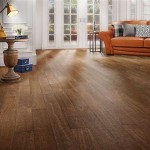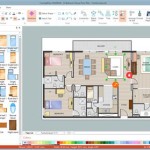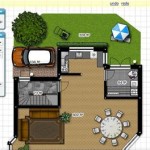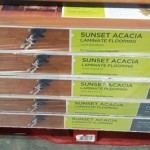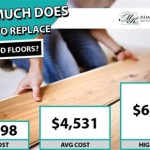Non-Slip Furniture Pads: Protecting Tile Floors and Stabilizing Furniture
Tile floors offer durability, aesthetic appeal, and ease of maintenance, making them a popular choice for residential and commercial spaces. However, the smooth, hard surface of tile can present challenges when it comes to furniture placement. Furniture can easily slide or shift, potentially scratching the tile surface and creating an unstable environment. Non-slip furniture pads offer a practical solution to these problems, providing a protective barrier between furniture legs and the floor while simultaneously preventing unwanted movement.
Choosing the correct type of non-slip furniture pad involves considering various factors, including furniture weight, leg shape and size, and the specific type of tile flooring. A comprehensive understanding of available options and their respective benefits is essential for making an informed decision that will effectively protect the floor and enhance furniture stability.
Understanding the Risks of Furniture on Tile Floors
Direct contact between furniture legs and tile floors poses several risks. The weight of furniture, especially heavier pieces like sofas, dressers, and dining tables, can exert significant pressure on the tile surface. This pressure, combined with even slight movement, can lead to scratching, chipping, or even cracking of the tile. Furthermore, the constant friction between furniture legs and the tile can wear down the protective finish of the tile over time, diminishing its shine and overall appearance.
Beyond the potential for floor damage, unstable furniture can also be a safety hazard. Chairs and tables that slide easily can cause accidental falls, particularly for individuals with mobility issues or in households with young children. Securing furniture in place with non-slip pads minimizes the risk of these accidents and creates a safer living environment.
Moreover, the noise generated by furniture scraping against tile can be disruptive and unpleasant. Sound reverberates easily across hard surfaces, and the screeching sound of a chair being dragged across the floor can be particularly irritating. Non-slip pads dampen this noise, contributing to a quieter and more peaceful home environment.
Types of Non-Slip Furniture Pads
The market offers a wide array of non-slip furniture pads, each designed to address specific needs and furniture types. These pads vary in material, size, shape, and application method. Understanding the characteristics of each type is crucial for selecting the most effective option for a given situation.
Felt pads are a common and relatively inexpensive option. They are typically made of compressed felt material and are available in various thicknesses and sizes. Felt pads provide a soft barrier between furniture and the floor, preventing scratches and reducing noise. However, felt pads offer limited grip and may not be sufficient for preventing significant movement, especially on smooth tile surfaces. They may be more suitable for lighter furniture pieces or areas where minimal movement is expected.
Rubber pads offer a superior level of grip compared to felt pads. Rubber is a naturally high-friction material that adheres well to smooth surfaces like tile. Rubber pads are available in various forms, including solid rubber pads, rubberized fabric pads, and rubber bumpers. They effectively prevent furniture from sliding and are suitable for heavier furniture pieces and areas with higher traffic. However, some types of rubber may leave marks or discolor tile floors over time, so it is essential to choose pads made from non-staining rubber.
Cork pads offer a combination of cushioning and grip. Cork is a natural material that is both resilient and slip-resistant. Cork pads provide a comfortable buffer between furniture and the floor while also preventing movement. They are a good option for furniture legs that are prone to wobbling or rocking. Cork is also a sustainable and environmentally friendly material. However, cork pads may not be as durable as rubber pads and may require more frequent replacement.
Gel pads represent a more advanced type of non-slip furniture pad. They are made of a soft, pliable gel material that conforms to the shape of the furniture leg and the floor surface. Gel pads offer excellent grip and cushioning, effectively preventing both sliding and scratching. They are also highly durable and resistant to wear and tear. However, gel pads tend to be more expensive than other types of non-slip pads.
Adhesive-backed pads are designed to be attached directly to the bottom of furniture legs. This type of pad offers a secure and permanent solution for preventing movement. Adhesive-backed pads are available in various materials, including felt, rubber, and foam. However, the adhesive can sometimes damage furniture legs or leave a residue when removed. It is essential to choose adhesive-backed pads with a high-quality adhesive that is designed for use on furniture.
Key Considerations When Choosing Non-Slip Furniture Pads
Selecting the appropriate non-slip furniture pads requires careful consideration of several factors. The weight of the furniture is a primary consideration. Heavier furniture pieces require pads with a higher level of grip and durability. Lighter furniture pieces can typically be accommodated with less robust pads.
The shape and size of the furniture legs are also important factors. Pads should be appropriately sized to fit the furniture legs. Overly small pads may not provide adequate grip, while overly large pads may be visually unappealing. For irregularly shaped legs, consider using pads that can be easily trimmed or customized to fit the leg shape.
The type of tile flooring is another crucial consideration. Some types of tile, such as glazed ceramic tile, are more slippery than others, such as textured porcelain tile. Smoother tile surfaces require pads with a higher coefficient of friction to prevent movement. Also, consider the tile's sensitivity to staining; some rubber or adhesive materials can discolor certain tile types. Testing the pad on an inconspicuous area of the floor before full application is recommended.
The intended use of the furniture should also be taken into account. Furniture that is frequently moved, such as dining chairs or rolling carts, requires pads that are durable and resistant to wear and tear. Furniture that remains stationary, such as sofas or dressers, can be accommodated with less durable pads.
Finally, consider the aesthetics of the furniture pads. While functionality is paramount, the pads should also be visually unobtrusive. Choose pads that are similar in color to the furniture legs or the floor to minimize their visibility. Some pads are designed to be completely hidden from view, providing a seamless and aesthetically pleasing solution.
Proper Installation and Maintenance of Non-Slip Furniture Pads
Proper installation is crucial for maximizing the effectiveness of non-slip furniture pads. Before installing the pads, thoroughly clean the furniture legs and the floor surface to remove any dirt, dust, or debris. This will ensure a strong and secure bond between the pad and the furniture leg.
For adhesive-backed pads, carefully peel off the backing and firmly press the pad onto the bottom of the furniture leg. Ensure that the pad is centered and aligned properly. Apply pressure for several seconds to allow the adhesive to bond fully. For non-adhesive pads, simply place the pad under the furniture leg, ensuring that it is positioned securely.
Regular maintenance is essential for prolonging the life of non-slip furniture pads. Periodically inspect the pads for wear and tear. Replace any pads that are damaged, worn, or no longer providing adequate grip. Clean the pads regularly with a damp cloth to remove any dirt or debris that may have accumulated. Avoid using harsh chemicals or abrasive cleaners, as these can damage the pads.
For felt pads, consider using a vacuum cleaner to remove any trapped dust or debris. For rubber or gel pads, wipe them down with a mild soap and water solution. For adhesive-backed pads, be careful not to get the adhesive wet, as this can weaken the bond.
By following these installation and maintenance guidelines, individuals can ensure that their non-slip furniture pads provide long-lasting protection for their tile floors and maintain the stability of their furniture.
In conclusion, non-slip furniture pads are an indispensable accessory for protecting tile floors and ensuring the stability of furniture. By understanding the various types of pads available, considering the key factors relevant to individual needs, and following proper installation and maintenance procedures, individuals can effectively safeguard their floors and create a safer and more comfortable living environment.

Angel Sar 4 In X Square Rubber Non Slip Furniture Pads Anti Sliding Floor Protectors For Brown Pack Zmpo5559 The Home

Furniture Pads Non Slip Felt Gripper 2 Inch Feet Tile Wood Laminate Floor Protector Self Adhesive Anti Skid Scratch Rubber Pad Round

Furniture Pads Non Slip Felt Gripper 2 Inch Feet Tile Wood Laminate Floor Protector Self Adhesive Anti Skid Scratch Rubber Pad Round

Non Slip Furniture Pads 4pcs Cups Coasters To Prevent Sl Delfori

Angel Sar 2 In X Square Rubber Non Slip Furniture Pads Anti Sliding Floor Protectors For Brown 4 Pack Jyyh5491 The Home

Rubber Furniture Pads Set Of 8 Non Slip Bed Leg Prevent Movement Hardwood Vinyl Tile Floor Protectors Durable Easy To Install Walmart Com

Hemico Self Adhesive Square Furniture Pads Anti Slip 12 Pcs Floor Protector Noise Insulation At 35 Piece Felt Pad In Surat Id 2854598957012

Non Slip Silent Furniture Pads Self Adhesive Feet Cover Floor Protector For Recliner Bed Couch Sofa Chair Legs

Dhgate Com 20 Pack Non Slip Rubber Furniture Leg Protectors For Hardwood Floors And Tiles Durable Black Caps Home Garden

Non Slip Furniture Pads 4pcs Cups Coasters To Prevent Sl Delfori

